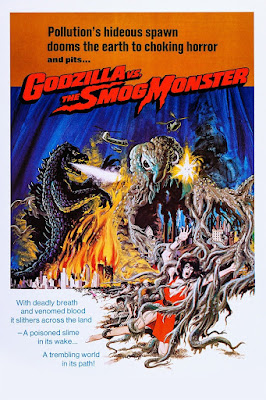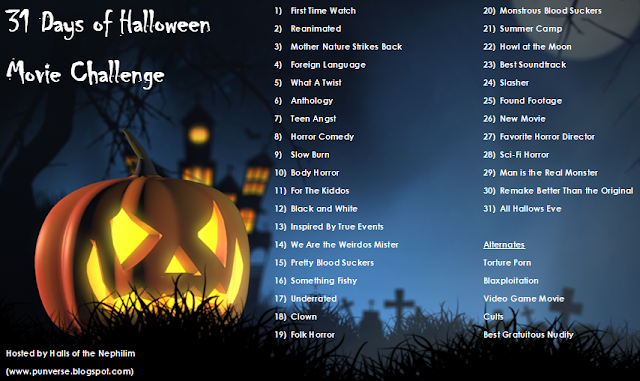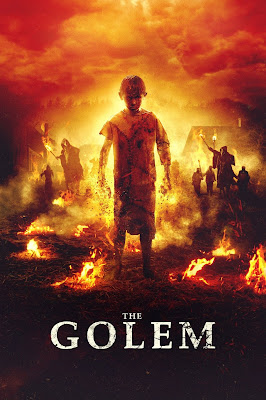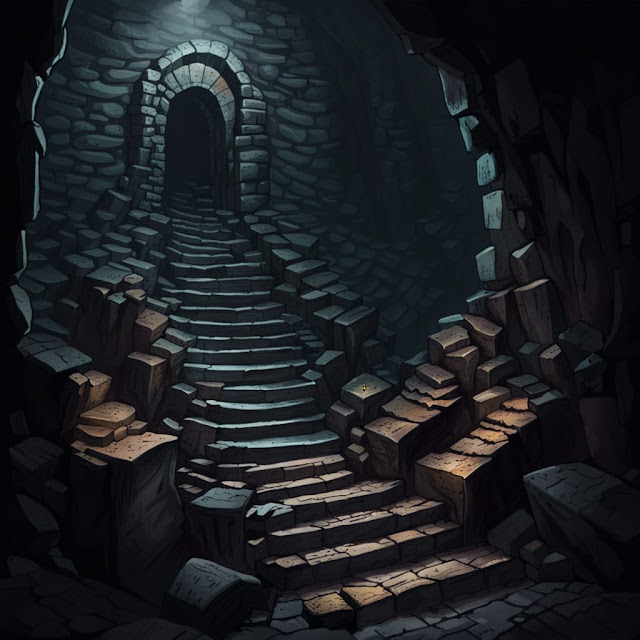1974 is an important year for the gaming hobby. It is the year that Dungeons & Dragons was introduced, the original RPG from which all other RPGs would ultimately be derived and the original RPG from which so many computer games would draw for their inspiration. It is fitting that the current owner of the game, Wizards of the Coast, released the new version, Dungeons & Dragons, Fifth Edition, in the year of the game’s fortieth anniversary. To celebrate this, Reviews from R’lyeh will be running a series of reviews from the hobby’s anniversary years, thus there will be reviews from 1974, from 1984, from 1994, and from 2004—the thirtieth, twentieth, and tenth anniversaries of the titles. These will be retrospectives, in each case an opportunity to re-appraise interesting titles and true classics decades on from the year of their original release.
—oOo—

It is often forgotten that
Star Trek: The Role Playing Game, published by FASA in 1982 was not the first Star Trek roleplaying game. It is often forgotten that
Call of Cthulhu, published by Chaosium, Inc. in 1981 was not the first licensed roleplaying game. The very first licensed roleplaying game and the very first roleplaying based on
Star Trek was
Star Trek: Adventure Gaming in the Final Frontier, published by Heritage Models, Inc. by in 1978. If the first roleplaying game based on
Star Trek is all but forgotten now, there is a third roleplaying game based on
Star Trek which remains almost unknown which in its own way is equally as important as
Star Trek: Adventure Gaming in the Final Frontier. For if
Star Trek: Adventure Gaming in the Final Frontier is notable as the first licensed roleplaying game, then
Enterprise – Role Play Game in Star Trek is notable for being the first domestic roleplaying game to be published in Japan and the first licensed roleplaying game to be published in Japan.
Enterprise – Role Play Game in Star Trek was published in 1983 as a boxed set by Tsukuda Hobby, which at that time was better known for its wargames and model kits. In 1983,
Enterprise – Role Play Game in Star Trek came as an eye-catching box set that included a twenty-page Rulebook, thirteen-page Adventure Book, fifteen double-sided Character Cards, two twenty-sided ten-sided dice, and one six-sided die. What is being reviewed here is not a copy of the original roleplaying game, as that would be almost impossible to obtain, but rather a translation that has been collated into a slim, fifty-eight-page hardback. The rules though, remain the same, even if the format does not.

A Player Character in
Enterprise is defined by his Race, several abilities or traits—Strength, Dexterity, Intellect, Charisma, and Luck, Alignment, and one or more Special Abilities. The roleplaying game’s ‘Alien List’ includes Andorians, Talosians, Romulans, Metrons, Eugenic Superhumans, Organians, Klingons, Medusans, Melkotians, Tellarites, Zetrians, Gorns, M113 Monsters, Horta, and Vuclans. It does not say, though, which of these are suitable for use as Player Characters. All have an Alignment, one or more Special Abilities, and possible ability modifications. All five abilities range on the three to eighteen scale. Strength is both the amount of damage a Player Character can withstand and the chance he has of defeating an opponent in hand-to-hand combat; Dexterity is used to determine Initiative in combat and with the Mechanical Repair Special Ability to disable traps; Intellect determines if the Player Character has the Medical Talent or the Science Talent and can help him gain allies; Charisma to help him gain allies, but from force of personality rather than intellect; and Luck is used to avoid traps. Alignment includes Logical Good, Logical Bad, Neutral, Emotional Good, and Emotional Bad. It is easy to map the characters from
Star Trek: The Original Series onto this array. The four Special Abilities are Mechanical Repair, Medical Talent (Treatment), Science Talent, and PSY Talent (ESP). Some aliens automatically have the PSY Talent (ESP), but Humans only have 10% chance of doing so. A Player Character’s chance of having the other three Special Abilities is based on their associated abilities. It is possible to create a Player Character who has multiple Special Abilities or none, depending upon whether the player rolls well or badly.
To create a character, the player selects a Race, rolls four-six-sided dice for each ability and deducts the lowest, and then rolls for each Special Ability. The process is very quick and easy. Alternatively, the player could select a member of the crew of the
Enterprise. The roleplaying game comes with a double-sided Character Card for each as well as several opposing characters. Each Character Card lists the various statistics, Special Abilities, and has space for tracking hits, making notes, and so on, whilst on the front is a photograph of the character. There are fifteen Character Cards, three of which are blank for the player’s use, whilst the rest consist of Kirk, Spock, McCoy, Uhura, Scotty, Sulu, Chekov, Chapel, Rand, Commander Kang the Klingon, Stonn the Vulcan, and Subcommander Tal the Romulan.
Name: Rosana GuimarãesRace: HumanAlignment: Emotional GoodSpecial Abilities: Mechanical Repair, Science TalentStrength 10 Dexterity 13 Intellect 12Charisma 15 Luck 16Equipment: Science Tricorder, Type II Hand Phaser, Communicator, knife and three days water and food.
Mechanically,
Enterprise – Role Play Game in Star Trek uses percentile dice, but that is about as standard as it gets, and not because the Game Master uses the six-sided die to determine if the Player Character senses something hidden—a door or a trap—and which Player Character an enemy targets in a fight. After that, everything else is a subsystem of its own, each straightforward in itself, but different enough to require referring to a table each time. So to find out if a Player Character discovers a trap or hidden door, the player needs to roll 30% or less, modified by his character’s Luck and to avoid a trap if triggered, is another percentile roll, the number determined by the character’s Luck after consult the ‘Avoid Trap’ table. The chance is equal to 50% if the Luck value is 13, then modified by 5% up or down depending upon the Luck value. However, consulting the ‘Bypass Lock or Trap’ table, the required number is based on Dexterity and the chance is equal to 50% if the Dexterity value is 10. Undertaking tasks such as analysing or repairing a piece of equipment or an artefact requires the Player Character to have the Mechanical Repair Special Ability and his player to roll under the device’s Repair Probability, for example, 20% for a Universal Translator. If a Player Character has the Science Special Ability, he can use a computer or tricorder without any problems. Enemy computers are assigned a percentage, which the Player Character must roll under to be able to use. There are no modifications from the abilities on any of these rolls, so effectively, a Player Character with higher stats has a higher chance of having a Special Ability, but not a better chance of using it.
Encounters with NPCs are either hostile or non-hostile. Hostile NPCs always attack. Encounters with non-hostile NPCs require an Alignment Check. The Game Master compares the Alignments of the Player Character and the NPC. This determines the attitude of the NPC, either Domination, Equality, or Deception, which is kept secret from the player. The player then guesses what the NPC’s attitude is and selects his character’s approach, either Domination, Equality, or Deception. If the player is correct in guessing the NPC’s attitude, he can make an Attitude Option roll, again, either Domination, Equality, or Deception. This is a base percentile roll modified by either the Player Character’s Charisma and Intellect, sometimes both. If successful, the NPC becomes an Ally under the player’s control, joining the party of Player Characters. If the Alignment Check fails, the NPC becomes hostile and attacks, although it is suggested to the Game Master that depending upon the scenario, if the roll is failed, an NPC can still appear to act in a friendly manner towards the Player Characters, only to betray them later or act hostile initially, only to become an Ally later.
The Alignment Check and interaction rules for NPCs are not developed enough to work effectively. There are no bonuses or penalties to determine the effect of the three approaches—Domination, Equality, and Deception—working against each other. Unless the player successfully guesses the NPC’s attitude, the results are binary—failure, if not open hostility and combat. Also, the rules state that, “Regardless of whether or not the Alignment Check is required, the GM should roll the 20‐sided dice. Otherwise, the player may be able to discern whether or not they were right or wrong about the attitude of the NPC.” At this point, it is not clear what the Game Master is rolling for. Only in the accompanying example, does it become clear that the Game Master makes the Attitude Option roll and not the player.
Once surprise and initiative has been sorted, combat begins with dividing the combatants into groups of three on each side and the Game Master the values of a six-sided die to help randomly determine who targets who. Ranged combat is based on range—determined by the weapon’s range bands and distance to the target—and the attacker’s Dexterity. The result is a percentile value that the player or Game Master must roll under. The Game Master also has the option of applying penalties if the target is dodging, lying prone, or behind cover, but there are no standard penalties given. Damage from energy weapons is deadly—a ten-sided die’s worth for a Hand Phaser’s Destruction setting and instant death for the Dematerialise setting. The Stun simply renders the target unconscious.
Hand-to-hand combat involves not so much out and out brawling as attempts by the combatants to knock each other out. The two combatants’ Strength Ability ratings are compared. If they are equal, they have a hand‐to‐hand combat value of 50%, this the chance of knocking each other out. A higher Strength than the opponent will increase the hand‐to‐hand combat value, whilst a lower Strength will decrease the hand‐to‐hand combat value. Being armed with a knife or a stone count towards the hand‐to‐hand combat value. Of the two combat systems, the ranged combat rules are better than the ones for hand-to-hand combat, which really fail to capture the knockabout nature of brawls seen on screen in
Star Trek: The Original Series.
The Adventure Book contains a single scenario, ‘The Drifting Ring’. The Enterprise has been assigned to investigate an object called the ‘The Ring’. It is a ten-kilometre diameter toroidal spacecraft and it is currently heading for Klingon space. The origins of The Ring lie at the centre of the galaxy where a race realised that their worlds increasingly in danger from a series of supernovae that would destroy the systems around them. They built a huge generational spaceship, populated it with crew, passengers (mostly in cryogenic sleep), and samples from their worlds, and headed for a safer area in the galaxy. Which to be honest, sounds an awful lot like the plot or at least the set-up, of Larry Niven’s
Ringworld. Aboard, the crew will find a society that has regressed due to isolation and lost knowledge, and then rebellion, resulting in the inside of the spaceship being perpetually in the dark. The location where the Player Characters beam aboard has the feel of an agrarian valley, complete with river, mountains, forest, and ruins. The area is home to three different factions which keep apart from each other, some of whom will not be hostile to the Player Characters, some will, and of course, if one of the players is roleplaying Kirk, there is a young girl who will follow unconditionally no matter what the result of the Alignment Check suggests. (That said, given that she is described as a “[B]eautiful 16 year old girl.”, the Game Master would probably want to add a year or two or three…) Much of the adventure is given over to detailing the various locations in the scenario, but the descriptions are lacking, even absent in many cases of describing what something or someone looks like.
‘The Drifting Ring’ does actually feel as if it would fit into a
Star Trek setting, given that the series dealt with a number of regressed civilisations, such as in ‘The Omega Glory’ and ‘For the World Is Hollow and I Have Touched the Sky’. Effectively, ‘The Ring’ is a sandcrawl, the Player Characters free to explore where they want to. It is also more scenario than mission, since there is no real mission attached to the adventure. The implied mission is that the Enterprise crew is trying to stop the flight of The Ring. How that is achieved is left up to the players and their characters to decide. Overall, ‘The Ring’ feels a bit too open, a bit too big to be contained within one episode of
Star Trek: The Original Series and despite, lacking in easy to use detail.
The Adventure Book concludes with some Design Notes from the author, Tama Yutaka. Notable later as the co-editor of the Japanese version of
Warlock – The Fighting Fantasy Magazine, here he states that, “I designed this STAR TREK game as a way to introduce the Role Playing Game ‐‐ currently at dizzying heights in the United States ‐‐ to Japan.” He emphasises the importance of the human, that character should be central, even given the prominence of machines in Science Fiction and Fantasy—especially
Star Trek—and this is what differentiates a roleplaying game from a board game. There is tentativeness to the Design Notes, if not the roleplaying game as a whole.
So what is missing from
Enterprise – Role Play Game in Star Trek? Fundamentally, two things. First, there is no background on
Star Trek at all in the setting. None at all. It assumes that both Game Master and her players are familiar already with the television series to play. Second, the U.S.S.
Enterprise. Or, indeed, any starships. They are completely ignored, so very much like the earlier
Star Trek: Adventure Gaming in the Final Frontier, published by Heritage Models, Inc.,
Enterprise – Role Play Game in Star Trek is all about the away missions and what happens on planet or aboard a space station rather than aboard ship. Similar to
Star Trek: Adventure Gaming in the Final Frontier, there is no means of character progression either, even though it is possible to create Player Characters. The combination of this lack of character progression with the limited options in terms of the Special Abilities to select from or roll for—Mechanical Repair, Medical Talent (Treatment), Science Talent, and PSY Talent (ESP)—means that characters themselves feel shallow. It does not help that with no ships involved in the roleplaying game, there are no Special Abilities related to their option, but there are no combat or interaction Special Abilities either. Perhaps a second edition might have addressed these issues and been less of a skirmish roleplaying game, something that not even FASA’s
Star Trek: The Role Playing Game was able to wholly avoid.
Physically,
Enterprise – Role Play Game in Star Trek was presented for 1983. Its combination of a box set containing the two books, the Character Cards, and dice would have looked attractive and caught the eye of any
Star Trek fan. The translation is clear and simply presented, the Character Cards of the crew of the Enterprise and their foes and allies are decently done, and the maps are workable.
Enterprise – Role Play Game in Star Trek is very much the
Star Trek: The Original Series roleplaying game, really suggesting that the players take the roles of the crew of the U.S.S.
Enterprise rather than create their own crewmen. Like the earlier
Star Trek: Adventure Gaming in the Final Frontier, it wants to push away from the wargaming origins of the hobby and like
Star Trek: Adventure Gaming in the Final Frontier, it does not quite do so because it never really gets away from being a skirmish game played out on maps and floorplans. Yet it has some interesting ideas, such as the emotion-versus-logic Alignment system that is very Kirk-McCoy-Spock and the Alignment Check interaction mechanic, that suggests it does want to be more than this. These remain undeveloped though and with a focus on elements of play such as the need to check for traps and hidden doors, on movement, and the like,
Enterprise – Role Play Game in Star Trek remains an unsophisticated design that all too often feels as if it has been written through the lens of
Dungeons & Dragons and its play style as much as
Star Trek. Ultimately, what makes
Enterprise – Role Play Game in Star Trek an interesting roleplaying game is not that it is a
Star Trek roleplaying game, but that it is the first Japanese roleplaying game.


























